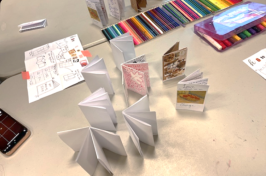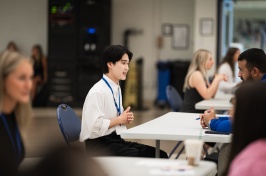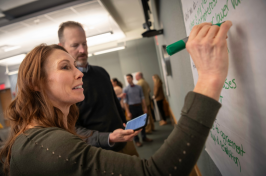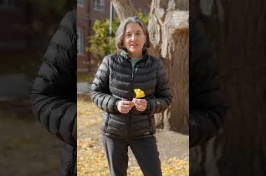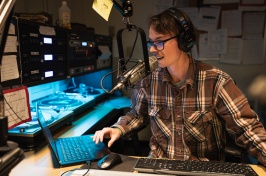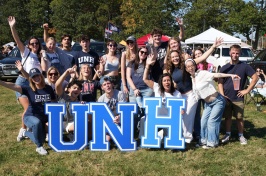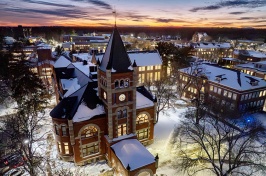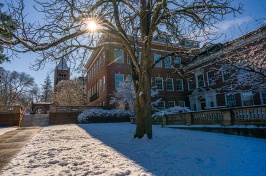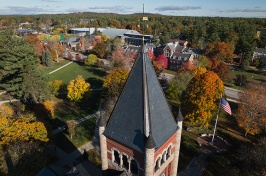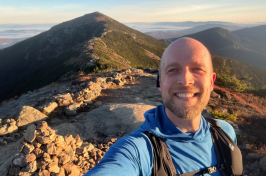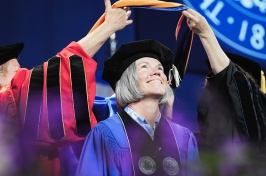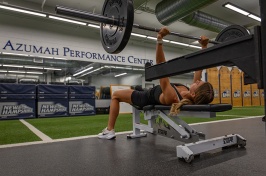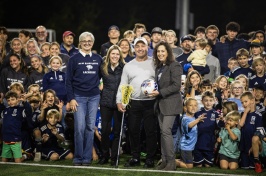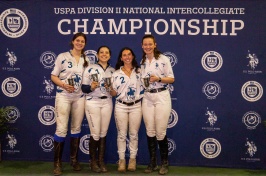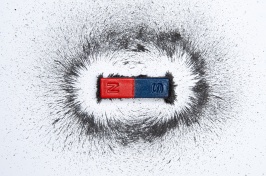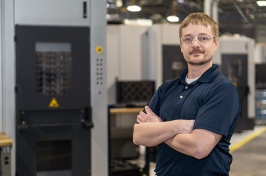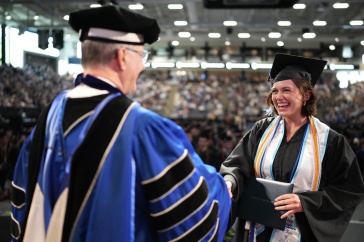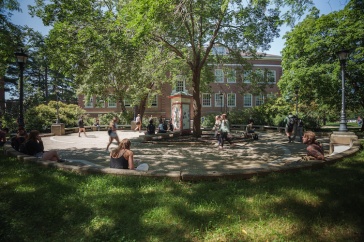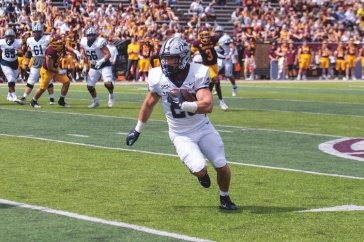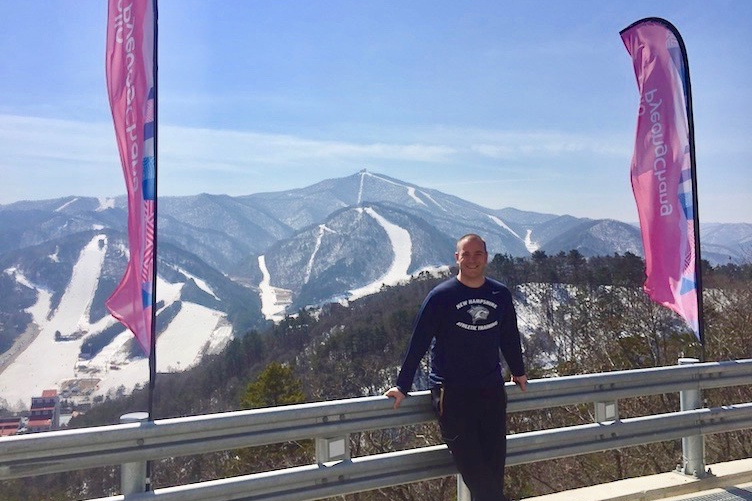
Assistant professor Ben Towne in PyeongChang, South Korea, site of the 2018 Winter Olympics.
A lot of people aren’t exactly certain where they want their degree to take them when they start college, and sometimes, even when they finish. Not so for Ben Towne, clinical assistant professor of kinesiology.
“I knew I wanted to work with Olympic-level athletes,” says Towne, who has been an athletic trainer for the USA bobsled and skeleton team for 10 years.
But it wasn’t as simple as knowing where he wanted to go; Towne learned soon after earning his undergraduate degree that to even apply to the United States Olympic Committee sports medicine volunteer program, he needed to have three years’ experience as an athletic trainer. He got that while studying for his master’s and then working in the field.
A few months after he applied, Towne went to Lake Placid, New York, home of the 1932 and 1980 Olympic Winter Games, where he did a two-week rotation, tending to athletes from all sports.
“You’re evaluated by the medical staff, athletes and coaches,” Towne says. “If they like you, they’ll invite you to work with a specific team when there’s an opening.”
That opening came the following year with the bobsled and skeleton team. Towne traveled to Park City, Utah, where athletes train in a facility built for the 2002 Olympics. The next season, he spent two weeks with the bobsled team in Altenburg, Germany, during a World Cup tour. Several other World Cup trips followed, and then, in 2014, Towne and the team went to the Winter Games in Sochi, Russia.
Bobsled teams consist of two or four people. The course is up to 1,700 yards long and has 15 to 20 turns. Sleds can travel at speeds upwards of 100 miles per hour. Injuries from a crash are different than what other athletes often experience, Towne says.
“With the four-man team, you typically have four 200-plus pound men running and pushing a sled that weighs several hundred pounds, so there can be hamstring and groin injuries,” Towne says. “And if they crash, there can be head injuries, bruises and breaks. They’ve basically been in a car accident with no seat belt.”
The one thing he wasn’t initially prepared for, he says, were the burns.
“If they crash and flip over, they don’t stop right away. And there is only a thin layer of Lycra between them and the ice. The friction level is so high, they can get first- and second-degree burns,” he says.
“It was a great team effort, everyone working toward the same goal.”
Towne was with the team for two months leading up to the Winter Games in Sochi. He worked alongside the staff in the medical clinics, seeing athletes from any sport who came through, helping them get ready for their events.
“It was a great team effort, everyone working toward the same goal,” Towne says.
Of being at the Olympics, he adds, “I get chills just thinking about it. Walking out during the opening ceremony, in USA sweaters, the crowd noise going through your chest, feeling elated. I said to myself, ‘You need to remember this. If you never get back here, you have to remember this moment.’”
Last spring, Towne spent three weeks in South Korea with the bobsled team previewing the course they’ll use next month during the XXIII Olympic Winter Games in PyeongChang. Although still on the volunteer roster, Towne won’t be there, but he’ll be cheering just as hard for Team USA to succeed. “They’re like family, and I wish them all the success in the world.
“I’ll miss being there, but I feel very fortunate that I’ve had 10 years with the team,” Towne says. “Every trip I did with them, the World Championships, the Olympics, I worked as hard as that first trip. I tried to appreciate it as though it was my last.”
The 2018 Winter Games begin Feb. 9.
-
Written By:
Jody Record ’95 | Communications and Public Affairs | jody.record@unh.edu

